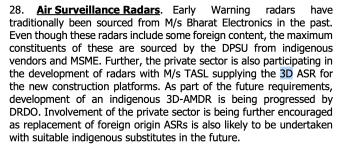Same QTRM and same in number, peak power transmitted is ~8.9kw.The LCA in a clean configuration isn't 0.3m^2 from all angles, and it did not track a clean configuration Tejas, external fuel tanks act like a truck when it comes to radar returns.
The prototype Uttam can track a 2m^2 target at around 150km.
Mk1A will have 912 TRMs, and Mk2 will have around a thousand (not 1200-1400).
Avg is 880w.
AMPL is manufacturing most of it (expected I guess).












